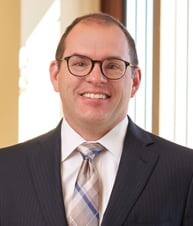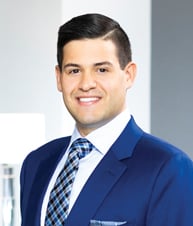A weekly summary of the precedential patent-related opinions issued by the Court of Appeals for the Federal Circuit and the opinions designated precedential or informative by the Patent Trial and Appeal Board.
Curver Luxembourg, SARL v. Home Expressions Inc., No. 2018-2214 (Fed. Cir. (D.N.J.) Sept. 12, 2019). Opinion by Chen, joined by Hughes and Stoll.
Curver sued Home Expressions for infringement of a design patent entitled “Pattern for a Chair” and claiming an “ornamental design for a pattern for a chair.” The design patent’s figures merely illustrate the design pattern without depicting a chair or any other article of manufacture. Curver alleged that Home Expressions made and sold baskets that incorporate the claimed design pattern and thus infringe. Home Expressions moved to dismiss, arguing that its baskets could not infringe because the design patent is limited to chairs. The district court agreed, and Curver appealed.On appeal, the Federal Circuit addressed an issue of first impression: “whether claim language specifying an article of manufacture can limit the scope of a design patent, even if that article of manufacture is not actually illustrated in the figures.” Addressing that question, the court noted that “our law has never sanctioned granting a design patent for a surface ornamentation in the abstract such that the patent’s scope encompasses every possible article of manufacture to which the surface ornamentation is applied.” Rather, “long-standing precedent, unchallenged regulation, and agency practice all consistently support the view that design patents are granted only for a design applied to an article of manufacture.”
When defining the scope of a design patent, courts traditionally focus on the patent’s figures. In this case, however, the figures do not depict any article of manufacture. The Federal Circuit thus held that, in this situation, the claim language serves to limit the scope of the design patent. The court explained: “While we agree that courts typically look to the figures to define the invention of the design patent, it is inappropriate to ignore the only identification of an article of manufacture just because the article is recited in the design patent’s text, rather than illustrated in its figures.” Thus, the Federal Circuit agreed with the district court’s reliance on the claim language to limit the scope of the design patent to the ornamental design applied to a chair. The court therefore affirmed the district court’s grant of Home Expressions’s motion to dismiss.
View Opinion
Henny Penny Corp. v. Frymaster LLC, No. 2018-1596 (Fed. Cir. (PTAB) Sept. 12, 2019). Opinion by Lourie, joined by Chen and Stoll.
Henny Penny Corp. (HPC) filed a petition for IPR directed to claims covering a system for measuring the state of cooking oil degradation in a deep fryer with a total polar materials (TPM) sensor. In the petition, HPC argued that the claims were obvious over the combination of “Kauffman” and “Iwaguchi.” The Patent Trial and Appeal Board instituted review, determining that a person of ordinary skill in the art would have been prompted to modify the teachings of Kauffman with Iwaguchi’s TPM sensor. The Board ultimately held, however, that the challenged claims were not unpatentable as obvious. HPC appealed, arguing that the Board (1) abused its discretion by interpreting HPC’s petition as limited to the physical substitution of Iwaguchi’s sensor for Kauffman’s, and (2) erred in concluding that the claimed deep fryer system would not have been obvious.
Addressing HPC’s first argument, the Federal Circuit ruled that the Board did not abuse its discretion by holding HPC to the obviousness theory set forth in its petition. An IPR petitioner may not raise in reply “an entirely new rationale” for why a claim would have been obvious. “But that is what HPC did here.”
The Federal Circuit next turned to HPC’s argument that, even under the petition’s theory of obviousness, the claims would have been obvious. HPC argued that the Board mistakenly found no motivation to combine and, additionally, erred in finding Frymaster’s evidence of industry praise to be probative of nonobviousness. The Federal Circuit held that substantial evidence supports both of the Board’s findings, and therefore affirmed the Board’s judgment. First, on considering “the prior art as a whole,” the Federal Circuit concluded that substantial evidence supports the finding of no motivation to combine. Second, Frymaster’s evidence of industry praise “is probative of nonobviousness even if it was not precisely limited to the point of novelty of the claimed invention.” Therefore, substantial evidence supports the Board’s decision to “giv[e] some weight to the industry praise of Frymaster’s deep fryer product.”
View Opinion
Infiltrator Water Technologies, LLC v. Presby Patent Trust, No. IPR2018-00224 (Oct. 1, 2018) (designated precedential on Sept. 9, 2019). Opinion by Kennedy, joined by Kalan and Woods.
The Patent Trial and Appeal Board vacated its institution decision and terminated the proceeding because, under recent Federal Circuit precedent, the IPR petition was time-barred under 35 U.S.C. § 315(b) and the Board therefore lacked jurisdiction to institute the IPR proceeding.
The petitioner filed its IPR petition more than one year after being served with a complaint asserting infringement of the patent in question. The complaint was ultimately dismissed without prejudice for lack of personal jurisdiction. In Click-to-Call Technologies, LP v. Ingenio, Inc., 899 F.3d 1321, 1330 (Fed. Cir. 2018) (en banc in relevant part), the Federal Circuit held that § 315(b) “does not contain any exceptions or exemptions for complaints . . . that are subsequently dismissed, with or without prejudice.” In a subsequent opinion, the Federal Circuit explained that, “Just as the statute includes no exception for a voluntarily dismissed complaint, it includes no exception for an involuntarily dismissed complaint.”
Applying this precedent, the Board held that the IPR petition was time-barred under § 315(b). The Board also determined that a stay was not appropriate because the petitioner failed to cite any authority for its assertion that the Board may stay a case over which it lacks jurisdiction.
View Opinion
General Electric Co. v. United Technologies Corp., et al., No. IPR2017-00491 (July 6, 2017) (designated precedential on Sept. 9, 2019). Opinion by Weatherly, joined by Jung and Hoskins.
In an IPR proceeding, the patent owners each filed a statutory disclaimer of all of the claims in the challenged patent, and they did so prior to the Patent Trial and Appeal Board’s institution decision. Under 37 C.F.R. § 42.107(e), “[n]o inter partes review will be instituted based on disclaimed claims.” The Board thus held: “Because all claims challenged by [the petitioner] have been disclaimed under 35 U.S.C. § 253(a) in compliance with 37 C.F.R. § 1.321(a), no inter partes review is instituted in this proceeding.”
View Opinion

